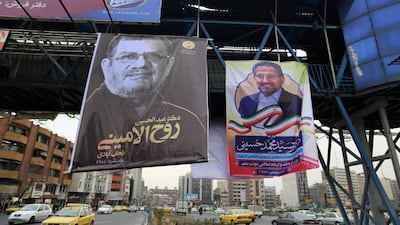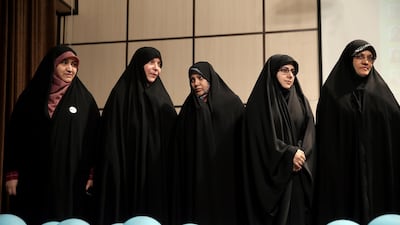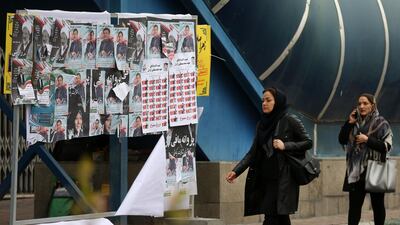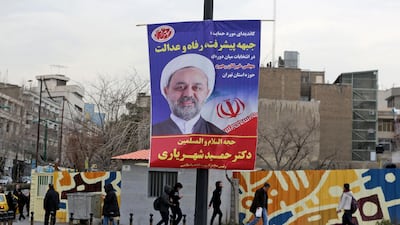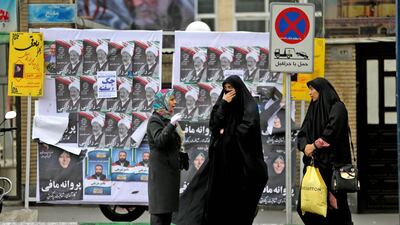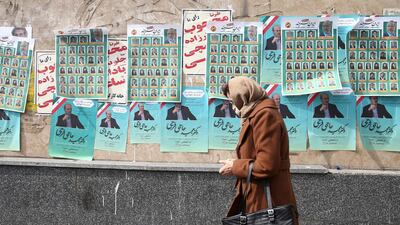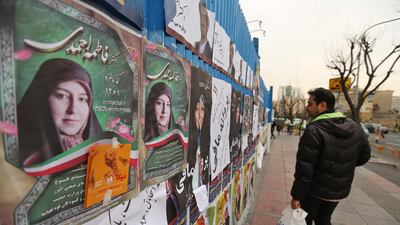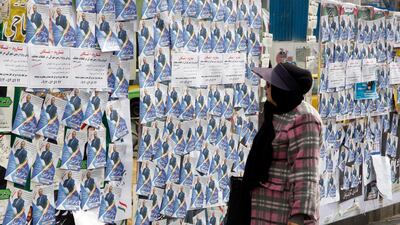Iran will hold its parliamentary elections on Friday to fill its 290-seat parliament, with the economy set to top the agenda for voters.
Iranian are to head to polling stations after the country's Guardian Council - comprised of 12 clerics and jurist Islamic scholars that vet all candidates - rejected more than 9,000 of the more than 14,000 hopefuls.
The panel disqualified 90 incumbent MPs from running, many reformist and centrist candidates, on vague grounds of “financial and moral corruption”.
The reformists protested the vetting by not fielding an electoral list in Tehran.
President Hassan Rouhani lashed out at the Guardian Council for not approving a more diverse spectrum of candidates saying "This is not an election” in a televised speech on January 15.
Despite his objections, Mr Rouhani encouraged people to vote.
The main issue in the February 21 poll is Iran’s dire economic situation, which increasingly impacts its society. Even the Iranian elite no longer has a buffer since the United States reimposed economic sanctions in November 2018.
Iran's ability to sell oil, its primary source of revenue, has been sharply eroded from 2016 that reached 3.2 million barrels a day to 500,000 barrels per day.
The value of the rial has plummeted as inflation has soared, with some reports that meat products had skyrocketed by 116 per cent.
Senior officials even suggested eating less or fasting to resist US sanctions. The World Bank estimated that inflation would average 38 per cent in fiscal year 2019/2020.
In 2019, 89 per cent of respondents to a national survey cited economic issues as the top challenge facing Iran.
Iranians born since the 1979 revolution constitute the largest bloc in the population of 82 million.
Between 2010 and 2020, some eight million people joined the work force, but only about a million jobs were created. Unemployment reportedly stands at 24 per cent for people below 29. Many have been unable to marry or move out of their parents’ homes.
Not all of Iran’s economic problems have been through sanctions, with swathes of Iranians citing domestic mismanagement and corruption. In October 2019, only 38 per cent of respondents said foreign pressure had the most negative impact on the economy, according to the Centre for International and Security Studies in Maryland.
Confidence in, and accountability of, the Iranian government is another issue of the wider Iranian public.
Public confidence in the government has visibly eroded since the mistaken shooting down of a Ukrainian passenger plane on January 8 killing 176 people, 140 of which were Iranian.
The regime denied responsibility for three days. Iranians, enraged by the attempted cover up, protested for almost a week.
Three presenters for state TV even quit in anger over the government's handling of the tragedy. "It was very hard for me to believe that our people have been killed," Gellare Jabbari, an anchor for IRIB, said on Instagram. "Forgive me that I got to know this late. And forgive me for the 13 years I told you lies."
Iranians are also concerned about the prospect of war with the US since record-high tensions in January. The 2015 nuclear agreement failed to deliver the promised economic benefits and diffuse tensions with the US.
Since US President Trump withdrew from the JCPOA in May 2018, Iranians have become increasingly disillusioned with the accord. By October 2019, less than half of Iranians approved of the JCPOA.
The biggest issue may now be how many Iranians actually vote. The regime cites turnout as a reflection of public support. In 2016, 62 per cent voted. How many will with so many candidates being barred from running for election, especially reformists and moderates, remains to be seen.
